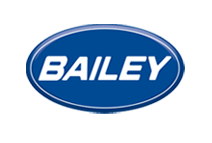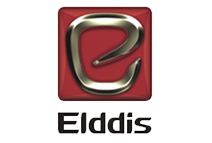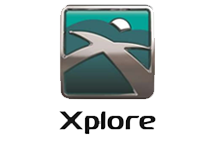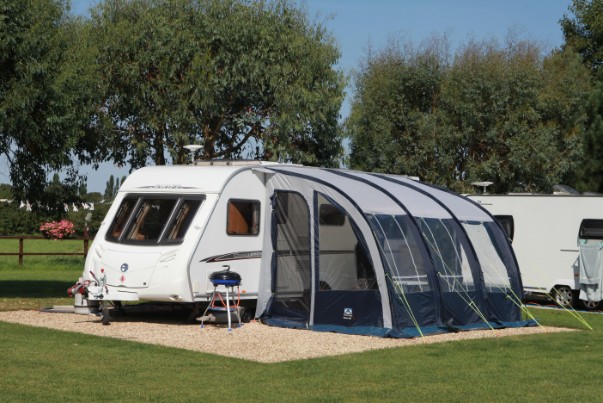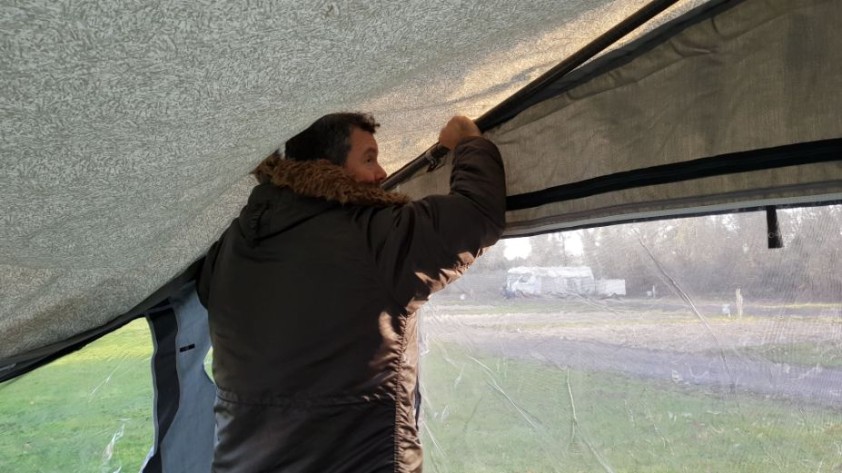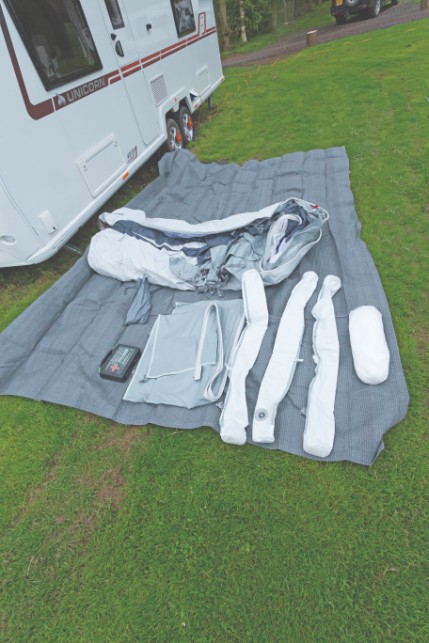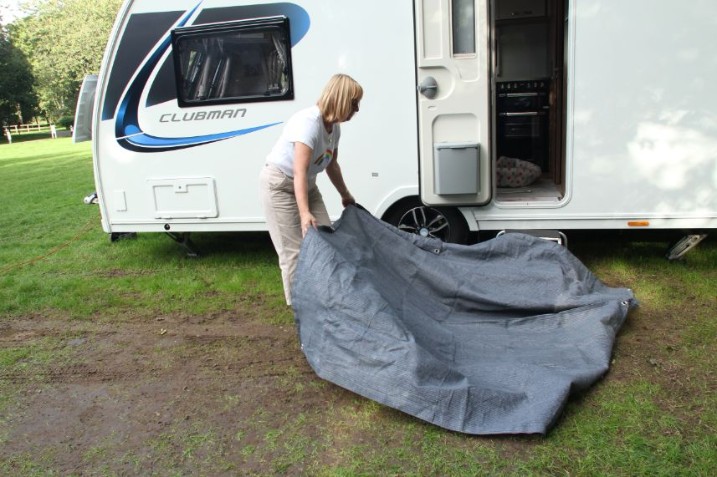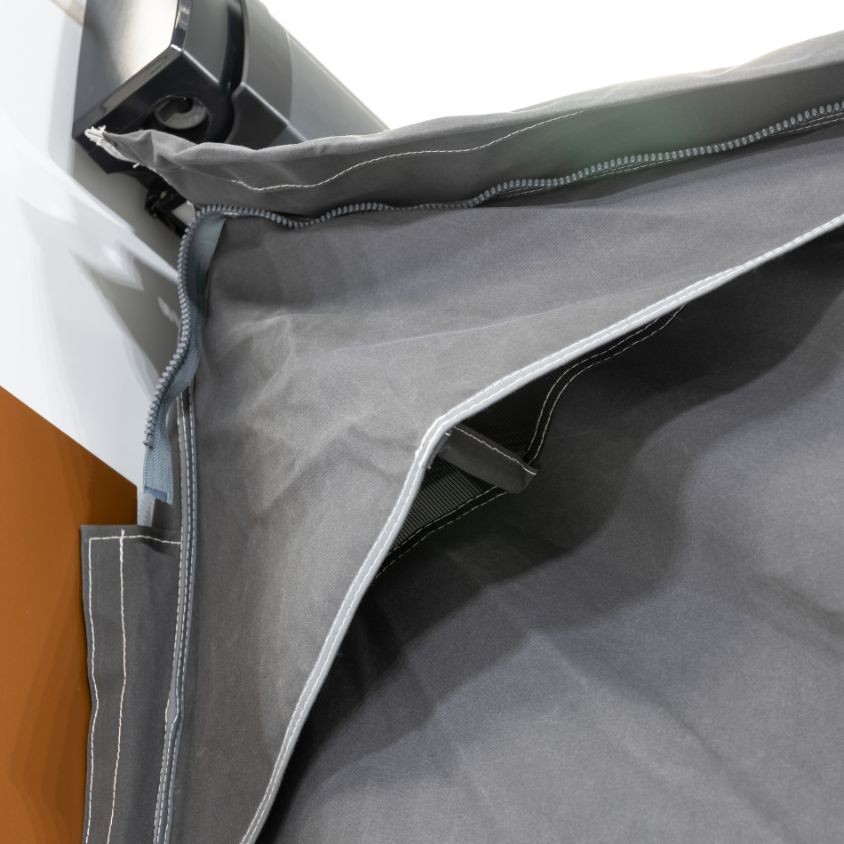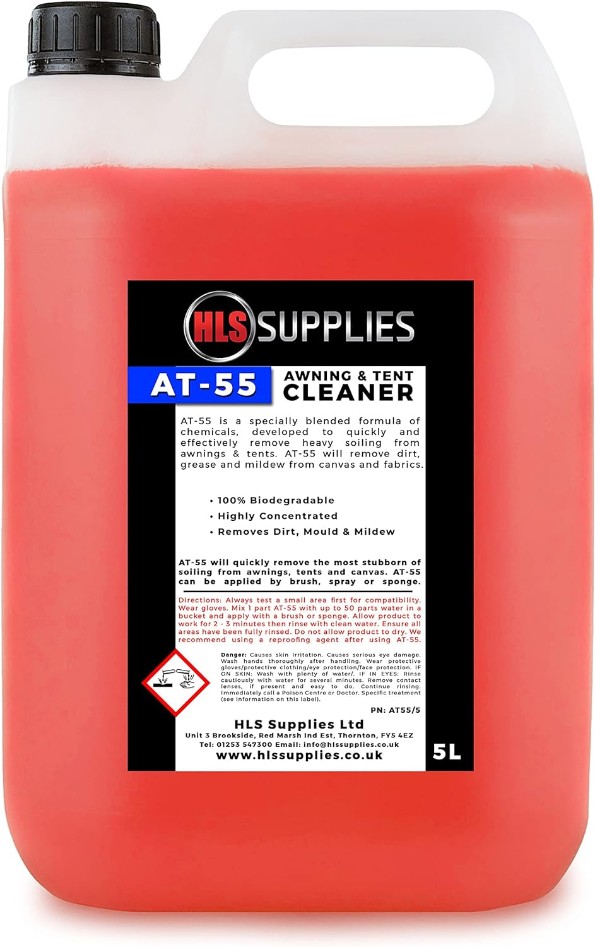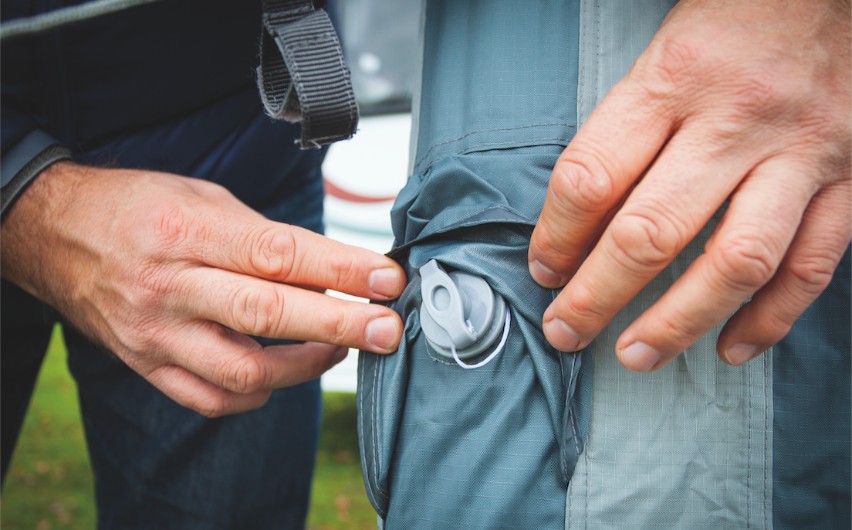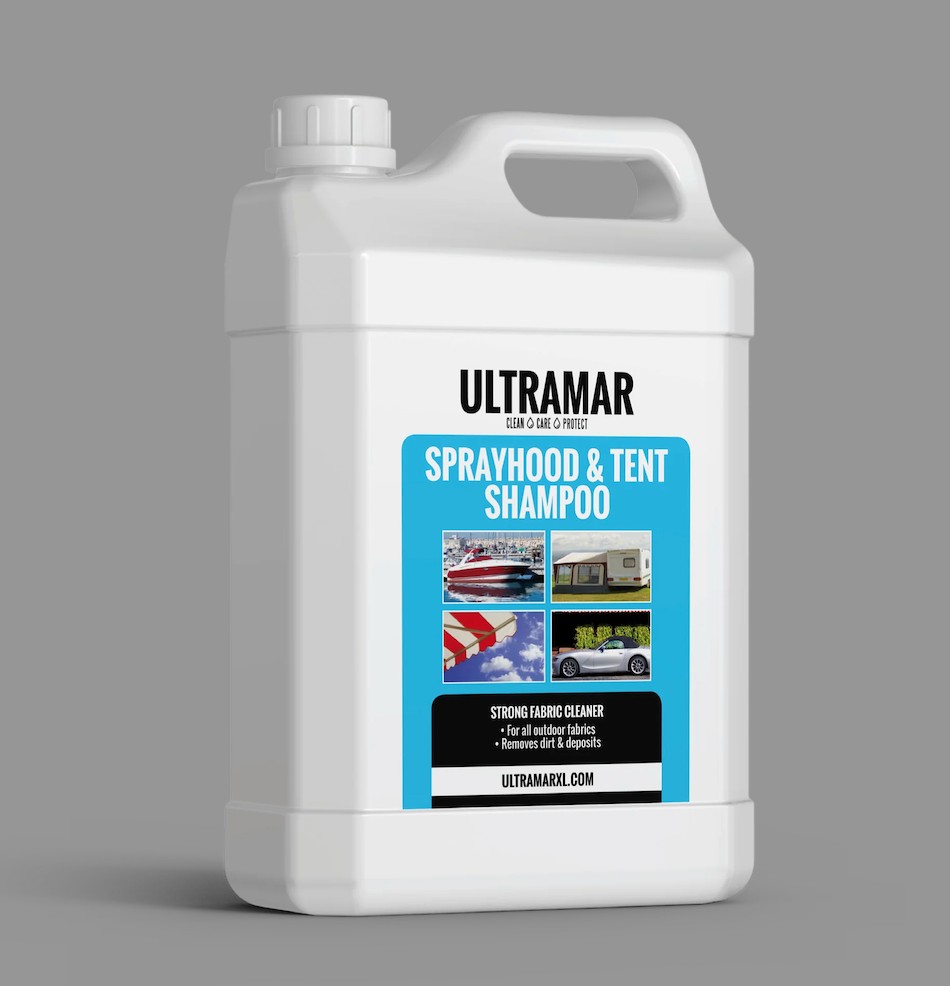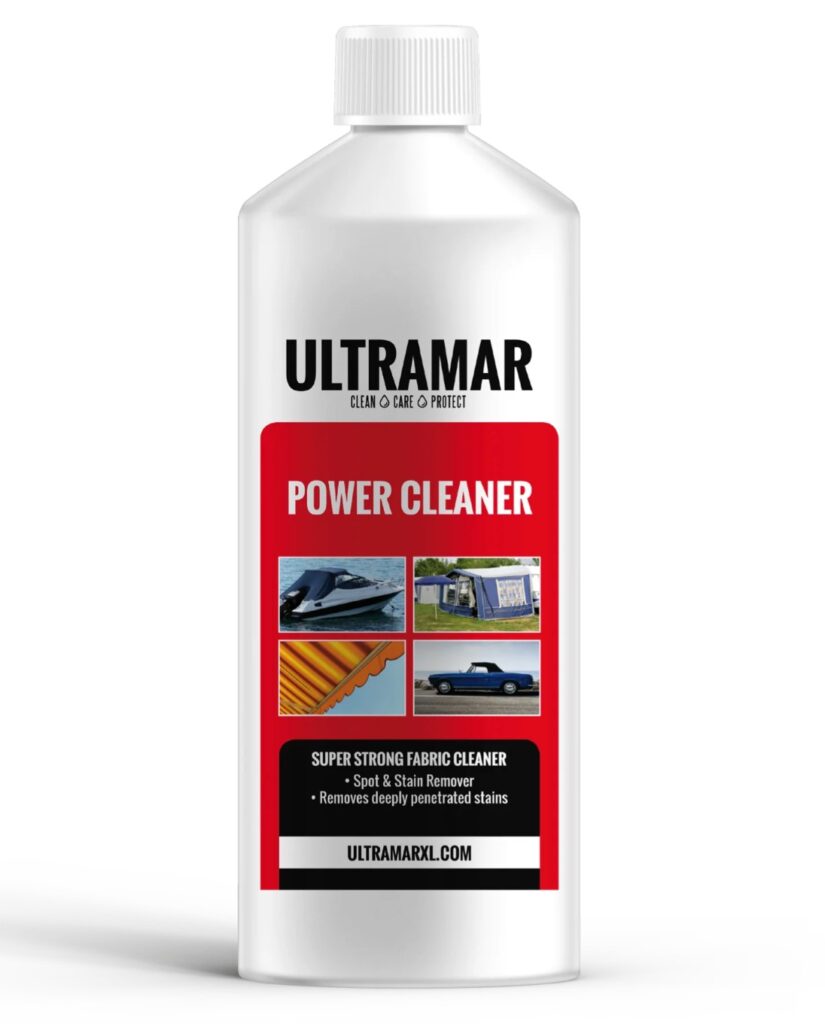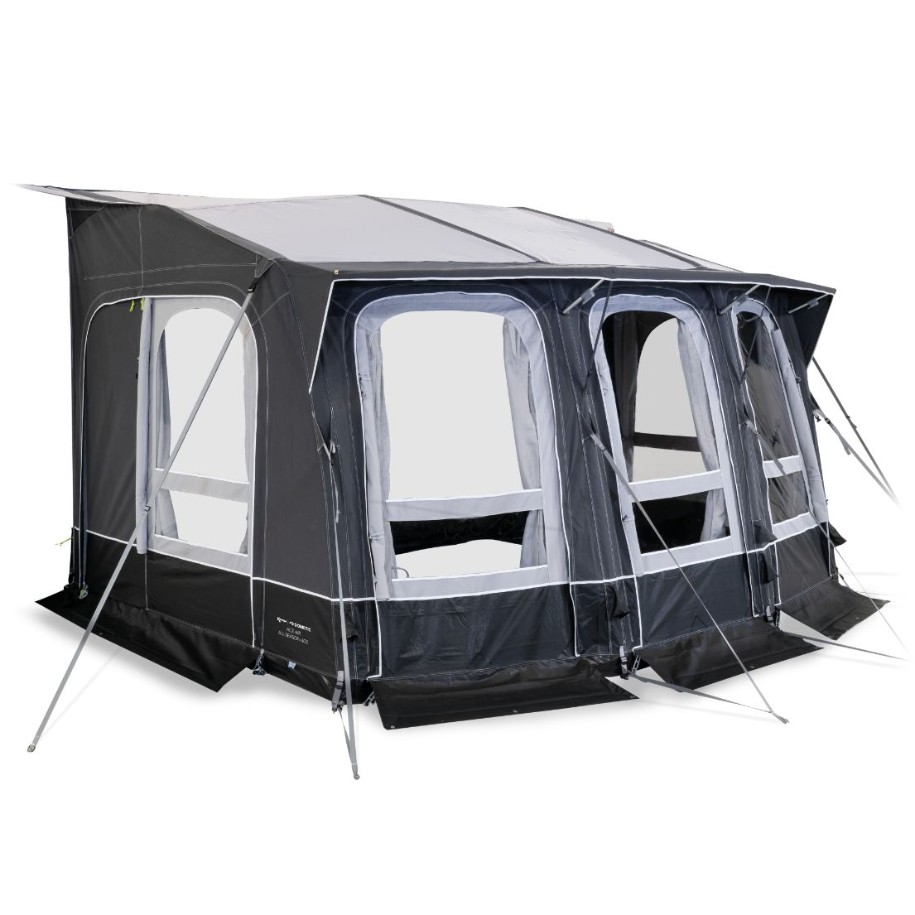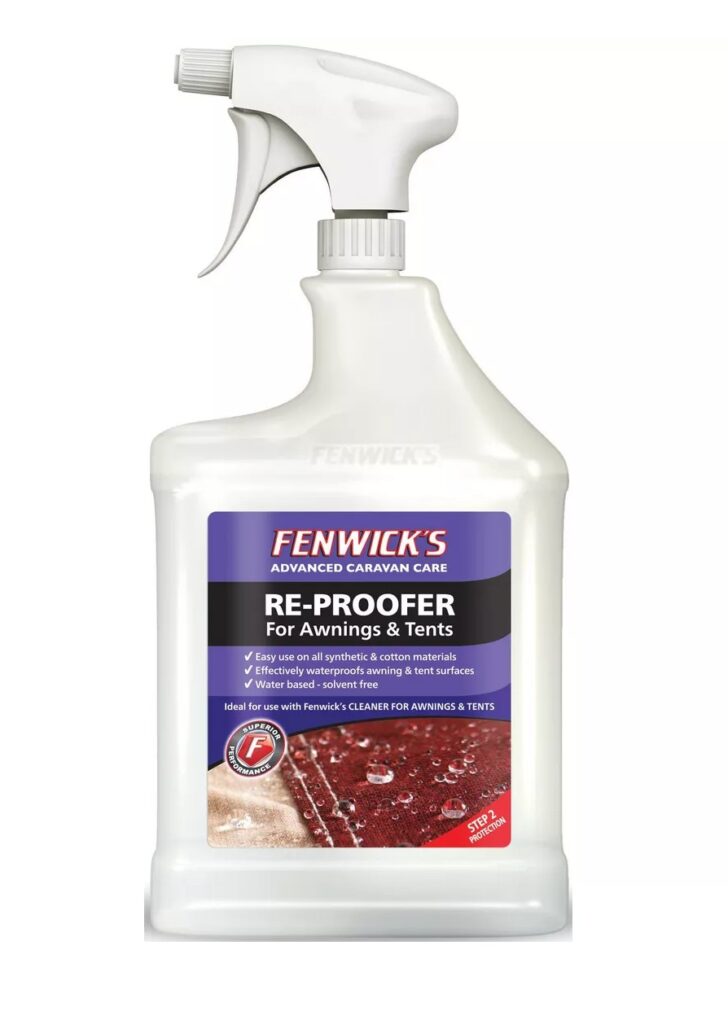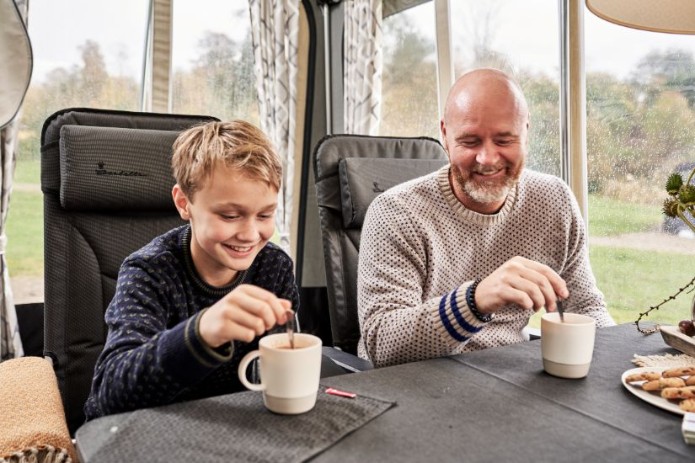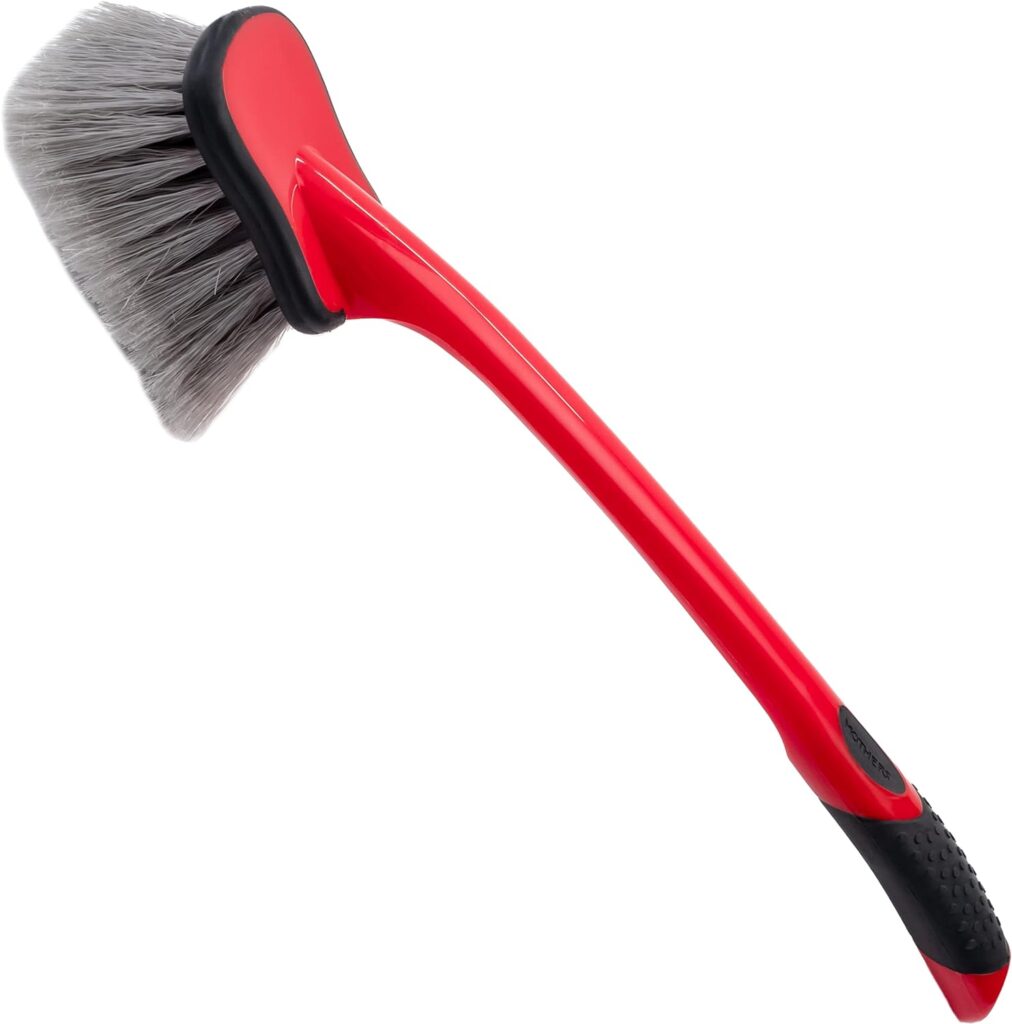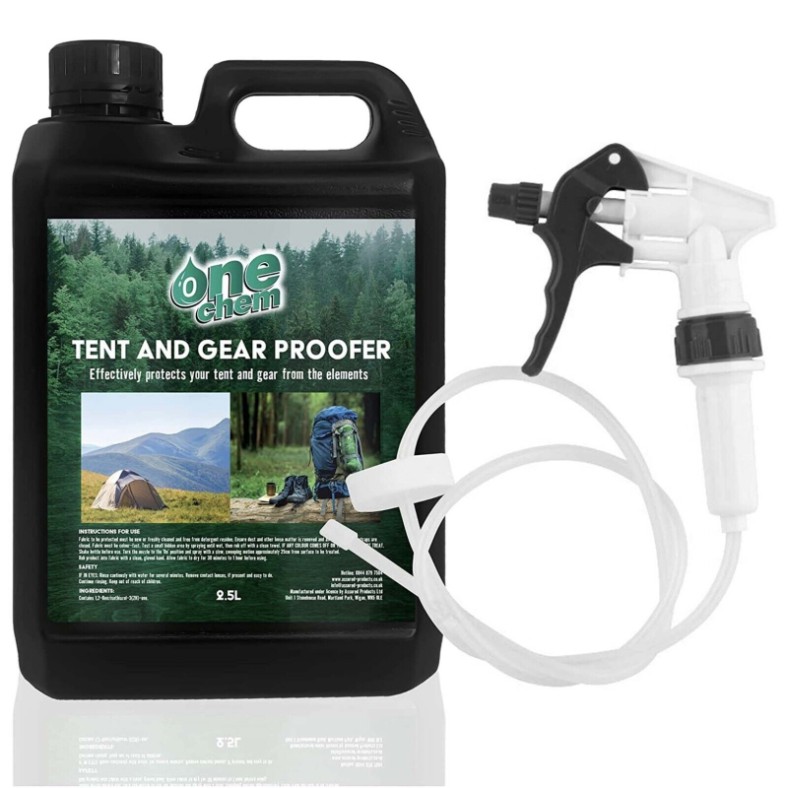Maintaining top-notch water systems in your tourer is essential for your health, safety, and convenience.
Modern touring caravans boast all the latest luxuries you find at home, including practical and effective water systems to deliver hot and cold water, 51 litres on-tap. Literally.
Running and maintaining these systems is simple enough to do, but there are some great devices, and lots of tips and advice, to make it easier and safer.
Let’s start at the very beginning…
Efficient Water Transportation: Understanding Water Carriers and Aquarolls
There are two convenient ways to get water to your tourer.
Most people rely on rolling water carriers, which make it relatively easy to transport a large volume of water from the nearest campsite tap to your pitch.
The name Aquaroll has become synonymous with these water carriers, but, in fact Aquaroll is a brand, and other manufacturers make rolling water carriers of a similar design.
Aquarolls, which is manufactured in Britain by FL Hitchman, come in a 40-litre size (from £41) and have a 10-year warranty. They have two caps, one on the end and one on the side. The one you use may depend on the height of your water inlet on your van.
Aquaroll also made a smaller 29-litre carrier, but, while these are still available online, they don’t appear on the aquaroll.com website.
Leisurewize Waterhog is another popular carrier. These come in a 51-litre size and cost from £45.75.
Caravanning Forums reveal that some people have had issues with the water carrier caps cracking, so carry a spare with them. These are available for around £10 online.
It’s a real eye-opener how much water a family of four uses, and if it’s between 40 and 51-litres, the bigger carrier may be the best bet to minimise trips to the tap.
Water carriers come with a transparent filler pipe which attaches to the campsite tap.
Water carriers like these require a short inlet hose, one end of which connects to the caravan water inlet, while the other is dropped into the water carrier.
The Truma version (£23) relies on an inboard pump in the caravan to extract the water, while the Whale High-Flow Submersible Pump version (£65) has a small anti-air-locking pump built in.
The water system fitted to your caravan will dictate which model you choose.
Water on full-service pitches
For those that use full-service pitches, there are several accessories designed to bring water directly from your pitch tap to the caravan. These come in two designs.
The first attaches to your water carrier beside your tourer and keeps it full to the brim. They use a ball-cock valve to stop the water flow when the carrier is full. You can just buy the ball-cock valve (from £21) from aquaroll.com, or purchase the valve with a 7.5m, food-grade hose attached (from £24.95). Various unbranded valve alternatives are available from as little at £7.29 online.
I opted for the 15m long Truma Ultraflow Waterline (£80), which does away with the need for a water carrier and connects straight to the Truma water inlet on the side of the caravan.
The first time I used it, it kept popping off the caravan inlet. It turned out the water pressure was too high, and when I adjusted the pitch tap, it worked perfectly. As a man, I obviously hadn’t read the instructions, which explained that the system has an inline pressure regulator. Either way, no more runs to the site tap…heaven!
Whale also makes a direct-to-caravan water hook-up called Whale Aquasource (£74.99). This measures 7.5m in length, with a 7.5m extension also available to buy. Aquasource has a built-in pressure regulator.
One possible benefit of the using a water-carrier-compatible system, is that, should a water pipe connection become loose inside the caravan, you won’t be flooded out by a constant flow of water. That said, I’ve never heard of this happening to anyone.
Hassle-Free Hydration: Water Solutions for Full-Service Pitches
An increasing number of luxury caravans now have onboard water tanks, just like motorhomes. These vary in size, typically up to around 40-litres.
The inboard tank has to be filled from an external source, such as an Aquaroll, or direct feed. The process may vary slightly from model to model, but it’ll be something like this. The water goes in via an inlet point on the side of the van, usually marked ‘Direct to Tank’. Inside the tourer, turn the valve to its tank-fill position and ensure the drain valves are closed.
Next, turn on the water pump to fill the internal water tank from the external container. The pump will cut off automatically when the tank is full.
When first using water from the onboard tank, turn on your water pump and open your kitchen tap to ‘bleed air from the system. Start with it in the hot-water position. Initially, it may splutter before settling down to a constant flow. Next, set it to cold water and more air may bleed from the system. The pump will cut out automatically when you turn off the tap. Repeat this procedure with each tap.
Water tanks are often at the end of the caravan. It isn’t or is safe to tow a long distance with a lot of water in the tank. As each litre weights 1kg, the total weight could create a pendulum effect, making the caravan unstable.
Fans of onboard water tanks cite the fact that you can have a small amount of water on-tap while you’re in transit; your water won’t freeze in winter, and should stay cooler on very hot days. In theory, you’re also less likely to run out of water, which is especially useful for off-grid campers.
Of course, most people still only have a 40-litre grey waste tank, which will need to be emptied when full.
Onboard water tanks are relatively easy to retro-fit if you so desire.
Efficient Heating: Managing Hot and Cold Water in Your Caravan
Once inside the caravan pipework, water is directed to the water heater for hot water, or by-passes it and enters the cold-water system.
Whether you have an Alde, Truma or Whale hot water systems, the way they heat the water is largely the same.
Each has a gas burner in a combustion chamber and electric heating elements. Most heaters can be used on gas only, electricity only or, for maximum heat, a combination of the two. The hot flue gases from the combustion chamber are circulated through a heat exchanger, then exit the system via an exhaust vent.
The hot air (Truma) or water (Alde) for the ‘central heating’ travels through adjacent channels and is warmed by a heat exchanger. Meanwhile, both the burner and heat exchanger ducts are surrounded by a 10-litre stainless-steel water jacket.
The water in this space is heated by the unit to temperatures up to 60°C. The Truma Combi 4e heater can raise 10 litres of water from ambient temperature to 60°C in about 20 minutes, on its Boost setting.
When a tap is turned on, a microswitch in the tap or pressure sensor detects the demand for water and the water pump activates, pumping hot or cold water to that tap.
Managing Grey Water: Efficient Waste Disposal Solutions for Your Caravan
Waste water from the sink, basin and shower is known as ‘Grey Waste or grey water’, and drains away from the van through pipes under the floor. These pipes meet at one point (usually with two exits) where you can attach your waste-water container.
Often this container will be emptied and rinsed daily, so it doesn’t become smelly, but scented, anti-bacterial chemicals are available to keep it fragrant!
Numerous wastewater carriers are available. I’d pick one with wheels as they are bigger, so need emptying less often, and are more portable. These include the likes of the 38-litre Wastemaster (£49.50), the Fiamma 23-litre Waste Water Roll (£47) or the 46-litre Leisurewize Wastehog (£60).
Preparing for Storage: Properly Draining Your Caravan Water System
When you put your caravan into storage for more than a few days, it’s a good idea to drain the water systems down. This ensures you’re not drinking or washing in stagnant water next time you use the van, it lessens the likelihood of leaks or freezing and it should maintain your boiler and ancilliaries in better condition.
The process is easy, as, on most tourers, you simply open the two yellow drain valves, which are located close to the boiler. You’ll then see/hear the water draining out on to the ground below.

Keep It Clean: Essential Steps for Caravan Water System Maintenance
To prevent unpleasant bacteria and algae building up in the water system, it makes sense to clean it regularly.
Some frequent caravanners like to pop a water-purifying tablet in the water tank or Aquaroll every now and then, for intermediate cleansing. This reduces the time-consuming, full-on, fill-and-flush cleanse to an annual event.
For the yearly deep-clean, many caravanners swear by Puriclean tablets/powder or Milton Fluid, but there are other tailor-made products, too, like Purisol fluid. Buying in bulk or bigger sizes can save you money, and, as Puriclean powder doesn’t have a sell-by date, it might be the better, cheaper option.
If you use Puriclean, for a 40-litre Aquaroll, you’ll need to fully dissolve nine teaspoons of the powder into a jug of water, mix it up well, then add the solution to a 90%-full water carrier.
Next, attach the water inlet hose to the caravan and drop the end into the Aquaroll.
Now you need to purge the entire system with the Puriclean solution. To do this, turn the pump on, then bleed each tap, one at a time, by opening it and waiting until it stops spluttering. The water coming through should ‘froth’ slightly in the sink or basin, due to the cleaning chemical. With all the taps bled (including the shower), leave the solution in the system for at least an hour.

 You’ll still have a large volume of Puriclean solution in your Aquaroll, so you can empty this out into a drain (it’s harmless), or, my preferred option, run most of it through the taps – it feels like better value for money and could clean any internal nooks and crannies where air bubbles might have formed.
You’ll still have a large volume of Puriclean solution in your Aquaroll, so you can empty this out into a drain (it’s harmless), or, my preferred option, run most of it through the taps – it feels like better value for money and could clean any internal nooks and crannies where air bubbles might have formed.
When it’s nearly empty, rinse out the Aquaroll and refill it with fresh water. This will be used to purge the Puriclean solution from the pump, heater, pipes and taps.
With the water hose back in the Aquaroll, turn on the cold taps and pump the entire barrel of water through the system. I repeat this operation with the hot tap on.
The system should now be entirely flushed and cleansed.
For cleaning the drain pipes and grey waste carrier consider Fenwicks Waste pipe and Tank Cleaner solution or Thetford’s bespoke grey waste concentrated cleaner.
Expert DIY Tips: Rod Farrendon’s Water System Advice for Off-Grid Caravanning
DIY guru, Rod Farrendon is an avid off-gridder, spending weeks at a time away in his van. Here are some of his top tips for your water system.
• I use a length of snap-on pipe cover to keep my inlet hose straight and the pump at the bottom of the Aquaroll.
• My Ionic showerhead reduces water consumption and makes the water feel softer.
• I mounted my caravan’s onboard water pump on a pad of firm packing foam. It reduces the vibration and drumming noise significantly, and I only had to lengthen the screws by 10mm.
• I also added extra drain taps to the system, as Swift routes the feed to the bathroom up and over the wheel arch, which makes it impossible to fully drain the pipes to the rear of the van.
• I also insulated the pipes in that area, as the wheel arch is just thin ABS, so provides little protection.
• Don’t let your water carrier run dry when using a Whale submersible pump, as the impellor is lubricated by the water and can be damaged if run dry. I switch off the pump as soon as I hear it run dry.
Expert Guidance and Accessories at Raymond James Caravans
In conclusion, maintaining your caravan’s water system is crucial for ensuring a safe and comfortable touring experience. From selecting the right water carriers to properly managing hot and cold water, each aspect of your water system requires attention to detail and regular maintenance.
By following the tips and advice provided, you can keep your system running smoothly and avoid common pitfalls.
For expert guidance and to find the best accessories for your water system, visit Raymond James Caravans. Our experienced team can help you with everything from water tanks to waste management solutions. This will make sure your caravan is ready for any trip. Visit our website or stop by in person to get the support you need.
For more caravan water-systems information
Alde – alde.co.uk
Truma – truma.com
Whale – whale.navico.com
Aquaroll – aquaroll.com
Leisurewize – streetwizeaccessories.com



